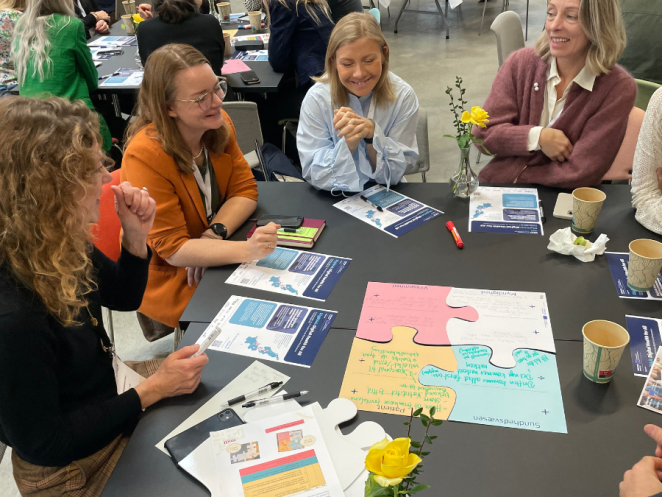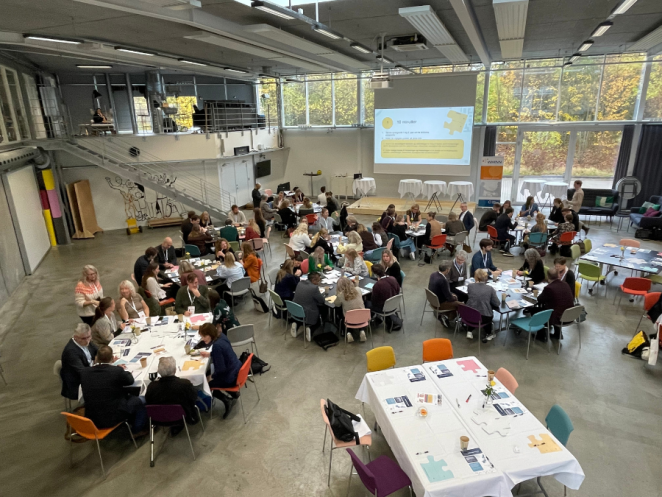At WHINN 2025, DigiH4A put Denmark’s digital health landscape in the spotlight with the seminar “From Silo Thinking to Synergy”. In a full room in Odense, representatives from regions, municipalities, industry, clinical practice, patient organisations and national authorities explored a central question: how can Denmark scale the digital solutions it already knows can help patients?

Denmark’s digital health paradox
Denmark is widely recognised for its strong digital health infrastructure, with national platforms such as sundhed.dk and MedCom providing a solid backbone for data sharing and communication. Yet reimbursement and procurement for digital services remain highly decentralised: five regions and 98 municipalities each set their own rules and pathways.
The result is a patchwork of local requirements that is difficult for SMEs to navigate and makes it hard for successful pilots to become routine care. The 2024 healthcare reform and the planned organisation Digital Health Denmark (expected in 2027) aim to bring more coherence to governance, standards and data infrastructure – and expectations are high.

From stories to shared puzzle pieces
The seminar, hosted by DigiH4A partner Central Denmark Region (Region Midtjylland), began with a brief overview of demographic pressures, workforce shortages, and the need for digital tools to support new care models that are closer to citizens. Three user stories – from a citizen, a healthcare professional and an SME – illustrated both the promise of digital health and the practical barriers: complex pathways into clinical settings, unclear routes from pilot to payment, and multiple portals and log-ins for users.
Participants then moved into an interactive workshop. In mixed groups, they role-played patients, clinicians, companies or authorities and wrote barriers and opportunities on physical puzzle pieces. These later provided the backdrop for the panel debate – a simple but effective way to show that Denmark has many strong building blocks, but not yet a fully connected picture.

What needs to change
Across tables and roles, several themes recurred. Barriers include:
- Limited integration between existing systems and new solutions
- Fragmented governance and uncertainty about future national structures
- Complex procurement rules and competition regulations
- Difficulties for companies to access clinical settings as there are many ways into the system
- Gaps in digital skills among both citizens and professionals
At the same time, participants saw clear opportunities. Denmark’s national infrastructure and new Health Councils (Sundhedsråd) can become platforms for joint decisions. Priorities identified include:
- Shared financing models across regions and municipalities so successful pilots can scale
- Clear national requirements on safety, quality and interoperability
- Better market scanning and less “not invented here” culture
- More research in local and primary care to document real-world value
- Stronger education and training in digital competencies for the future workforce

A candid panel – and a shared ambition
The closing panel brought together voices from different parts of the system. One message stood out: “We must act as one healthcare system.” More care needs to take place close to citizens, and that requires digital support that works across regional and municipal boundaries.
Panellists stressed that Denmark cannot afford to keep reinventing the wheel. If a good solution already exists, governance and financing mechanisms must make it attractive to adopt rather than rebuild. They also highlighted a weak link between innovation projects and “business as usual” procurement, which often prevents pilots from scaling.
There was a strong call for more evidence from everyday practice, not only from highly specialised hospital settings, and for citizens to be directly involved in designing and evaluating digital care pathways. Digital Health Denmark and a future national health data platform are seen as key levers to provide clearer standards, more unified data access, and robust cybersecurity.
Throughout the discussion, one competency kept coming up: collaboration. Technical infrastructure alone is not enough. Denmark’s next step is to align governance, financing and skills so that digital solutions can move from promising pilots to everyday practice.
For DigiH4A, the seminar confirmed both the opportunity and the challenge: Denmark combines one of Europe’s strongest digital foundations with some of its most fragmented pathways. The insights from “From Silo Thinking to Synergy” will feed directly into DigiH4A’s work on reimbursement models and gathering real-world evidence – helping ensure that digital health really becomes digital health for all.
Want to get in touch with the team? Send us an email!
